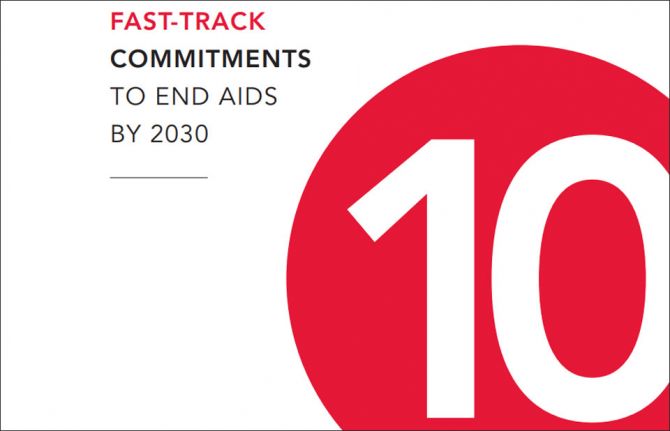

Feature Story
Measuring progress against the 10 commitments through Global AIDS Monitoring
07 May 2018
07 May 2018 07 May 2018At the United Nations High-Level Meeting on Ending AIDS in 2016, countries pledged to achieve a set of 10 Fast-Track commitments by 2020—an acceleration agenda that aims to end the AIDS epidemic by 2030 as part of the Sustainable Development Goals. To help ensure that the deadlines are met, the United Nations General Assembly requested an annual report on progress achieved in meeting those 10 commitments.
UNAIDS supports countries to collect information on their national HIV responses through the Global AIDS Monitoring (GAM) framework—an annual collection of 72 indicators on the response to HIV in a country. These data form part of the data set used to report back to the General Assembly.
Different from the HIV epidemiological estimates that countries produce for data on the state of the epidemic in a country—that is, data for making estimates on the number of people living with HIV, AIDS-related deaths, etc.—GAM collects information on HIV programmes, including the number of people living with HIV who know their HIV status and people on HIV treatment, and on stigma and discrimination. A full list of the indicators is given in the GAM guidelines.
A remarkable feature of the data collection for GAM and the HIV epidemiological estimates is the speed with which the information is collected, submitted and disseminated. UNAIDS distributes the GAM guidelines to countries each December. Countries submit their data online by the end of March. In collaboration with the World Health Organization, the United Nations Children’s Fund and the European Centre for Disease Prevention and Control, the data are validated and finalized. The HIV epidemiological estimates are produced along the same timeline, with the software made available to countries in early January and the final estimates submitted by countries at the end of March. The analysis of the global results of both data collections are published in UNAIDS’ mid-year report and on the AIDSinfo website, and ultimately are reported to the United Nations General Assembly.
Despite the short reporting timeline, in 2017 a total of 174 countries submitted data on their programmatic response indicators through GAM. The proportion of countries submitting data through the GAM website has steadily improved, from 53% of countries reporting in 2004 to 96% reporting in 2012, although reporting dropped to 90% in 2017, when the reporting cycle changed from biennial to annual. Before 2015, GAM was known as the Global AIDS Response Progress Reporting (GARPR) and was used to report on global targets for the AIDS response under the Millennium Development Goals.
A key component of ensuring that HIV-related data are as accurate as possible is collecting the right information to begin with. Therefore, each year a review of each indicator is made and adjustments to the set of indicators are made in order to ensure that the information on the national AIDS responses is accurate and relevant. In 2018, two new indicators—on HIV testing among pregnant women and on experiences of HIV-related discrimination in health-care settings—were added, while others were modified.
The indicators are carefully selected in order to ensure the maximum data collection with the least burden on the countries’ monitoring systems and are aligned with the indicators for the Sustainable Development Goals. The indicators are also granular, with countries requested to provide data disaggregated to the city level for some indicators.
Looking to the future, community-led data collection, such as through mobile applications or community observatories, are being looked into as complementary data collection tools for different insights into countries’ AIDS responses.
GAM is yet another way that UNAIDS is helping countries to monitor and respond to their HIV epidemics and work towards ending AIDS by 2030.
Resources
Related
 U=U can help end HIV stigma and discrimination. Here’s how
U=U can help end HIV stigma and discrimination. Here’s how

27 February 2025


